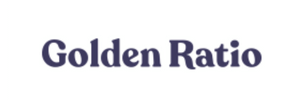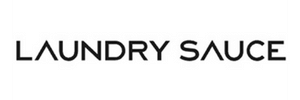The Power of Handwritten Notes
The digital era ushered in a host of new technologies, including a range of platforms that enhance the relationship between a business and their valued customers. The problem? No matter how hard brands try to mold consumers into buyer personas and target audiences for technology to shoot promotions toward, we’re all still human. Humans who crave connection. Humans who thrive on personal touch. Forget the Digital Era, we are living in the Relationship Centric Era. Consumers want to feel special - they want to be interacted with in a mindful, human way. Every point of contact a brand has with a consumer is an opportunity to provide purpose, bridge a deeper connection, and build a meaningful relationship
The digital era ushered in a host of new technologies, including a range of platforms that enhance the relationship between a business and their valued customers. The problem? No matter how hard brands try to mold consumers into buyer personas and target audiences for technology to shoot promotions toward, we’re all still human. Humans who crave connection. Humans who thrive on personal touch. Forget the Digital Era, we are living in the Relationship Centric Era. Consumers want to feel special - they want to be interacted with in a mindful, human way. Every point of contact a brand has with a consumer is an opportunity to provide purpose, bridge a deeper connection, and build a meaningful relationship.
With this in mind, why are so many brands still pushing and prioritizing impersonal email efforts? In 2019, 293 billion emails were sent and received worldwide every day, with the average office worker receiving 120 emails per day. Unfortunately for businesses, more emails doesn’t mean more clicks. Consumers view only 1 in 4 brand emails as interesting enough to open and 78% of recipients claim to have canceled email subscriptions because they are receiving too many. Meanwhile, email click rates continue to decline. It’s simple. People are tired of logging into their inbox only to be greeted with dozens of unsolicited messages. To consumers, the incessant influx of emails is just white noise. People want something in their hands. In fact, people value something they can see and touch 24% more highly than something they can only see.
DON’T TRADE SPAM FOR JUNK
But let’s not jump to conclusions. The answer isn’t for brands to revert their efforts back to direct mail. Cramming consumers’ mailboxes to the brim with snail mail isn’t going to impress anybody. The average American household receives unsolicited junk mail equal to 1.5 trees every year, resulting in 44% of that junk mail being thrown away unopened. Direct mail is disruptive. People don’t want to be interrupted by marketers. They want to feel valuable. Rather than be sold to, they want to be offered a solution to a problem or be given a thank you for their customer loyalty.
Both email and direct mail can be characterized in one word: overkill. There’s no sense of rarity in either practice. Every brand uses these tools to gain influence in their marketspace. The challenge is to differentiate themselves - to think deeply about and appreciate every interaction they have with their consumers. The quality of these interactions should surpass the quantity as the most critical metric.
Take a look at the numbers and statistics comparing email, direct mail, and handwritten letters in this easy to visualize infographic:
DOWNLOAD THE "HANDWRITTEN LETTERS: BY THE NUMBERS" INFOGRAPHIC
GET PERSONAL
Great marketing means treating people like people. A personalized touch helps businesses engage in more meaningful interactions with their customers. Delivering a handwritten note is an incredible way for businesses to let consumers know they are thought of as individuals, rather than as one of many. 57% of people claim receiving mail makes them feel more valued. By utilizing handwritten notes, businesses meet consumers’ needs in a way that their competitors can’t. Despite the digital revolution, Americans are still incredibly enthusiastic about their interactions with personal letters and cards, with 95% of 18- to 29-year-olds saying they feel positively about receiving a personal letter. There’s an anticipation surrounding personal mail that can’t be replicated by email or junk mail. In fact, 56% of people say receiving personal mail is a “real pleasure.” There’s a rush that comes along with seeing a hand-addressed envelope peaking out amongst the pile of junk mail. It’s deliberate and visceral. A handwritten letter lands in the hands of a consumer who is eager to receive the message. The average American household receives just 10 pieces of personal mail per year, as compared to 43,800 emails received per year. Personalized notes are the key to breaking through the clutter, making for an experience no other media can match.
Want to know more about the benefits of handwritten letters? We broke it down in an easy to see downloadable infographic. Click here to take a look:
DOWNLOAD THE "HANDWRITTEN LETTERS: BY THE NUMBERS" INFOGRAPHIC
AND IT’S WAY EASIER THAN YOU THINK
There’s a reluctance to commit to handwritten mail, despite its benefits, due to the amount of resources it seemingly takes. However, with services like IgnitePost, it’s possible to create personalized letters at scale. That’s right - delivering handwritten notes to loyal consumers can be as easy as sending an email or a text message. This allows businesses to accelerate and foster meaningful relationships without adding any workload to existing teams. Handwritten letters make for a massive opportunity to stand out to your audience. The recipient will see and value the personalization, creativity and perceived cost.
Interested in an account with IgnitePost? Get started for free here.
MOVING FORWARD
Handwritten notes reflect a company’s ethos and conscience, assuring consumers and clients that they are part of a relationship that is more than just business. Handwritten notes have permanence. They find their home on desks and bookshelves, not recycling bins and full inboxes. Businesses are built by humans. So doesn’t it seem obvious that businesses should use a distinctly human way of communication? Bring back what The Wall Street Journal deemed the “lost art.” Bring personal touch back. Show consumers you care, build loyalty, distinguish yourself from the competitive crowd, drive new business connections, elevate your customer service strategy. Sending a handwritten note offers limitless business possibilities.
DOWNLOAD THE "HANDWRITTEN LETTERS: BY THE NUMBERS" INFOGRAPHIC
We want to hear from you. When was the last time you wrote or received a handwritten note? How’d it make you feel? Tell us in the comments below.
Read more insights
-min.png)
Get expert insights for real mail campaigns
Everything you need to launch, run and scale handwritten card mail campaigns. Subscribe today!
































Ready to create your first magic moment?🚀
Start using IgnitePOST today. It's free to signup!
No contracts, no commitment and unbelievable support.
.svg)







.png)